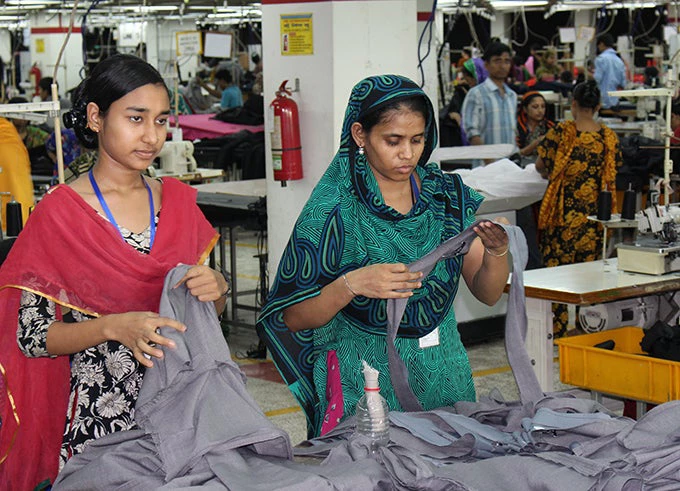
This blog is part of the series #OneSouthAsia exploring how South Asia can become a more integrated, thus more economically dynamic region. The blog series is a lead up to the South Asia Economic Conclave, an event dedicated to deepening existing economic links through policy and investments in regional businesses.
Here’s an interesting statistic: 95 percent of trade by South Asian countries is focused on Europe, North America, and, to a lesser extent, East Asia. This has kept the sub-continent, with several landlocked and border regions being some of the poorest in the world, from realizing the wealth in its own neighborhood. By contrast, 25 percent of ASEAN’s trade is within its own region.
Yet it doesn’t have to be that way. With the right approach, South Asia can revamp itself into an economic powerhouse, instead of being home to the largest number of the world’s poor. It has all the right ingredients for success: it is the fastest growing region in the world, has 1.7 billion people and the largest concentration of youth (aged 15-24 as defined by the UN).
South Asia was not always disconnected. In the past, there was seamless connectivity between Kabul and Chittagong, via the Grand Trunk Road. The trade along the Silk Route changed the world, making South Asia the most prosperous region of that era. Such cooperation provided early proof for what we now know: greater regional integration can boost production, reduce and stabilize prices, create incentives for regional value chains, improve the lives of people in landlocked sub-regions, and create constituencies for peace.
Let’s focus on trade, a critical measure of regional integration. How can South Asia’s intra-regional trade in goods and services increase from the current $28 billion to $100 billion, by 2020?
- Thinking of South Asia as an economic gateway between East and Central Asia can bring large dividends. To do so, South Asia first has to connect within itself, and significantly reduce intra-regional trade costs which, on average, are 85 percent higher than those in East Asia. Improving internal connectivity means that trucks travel seamlessly between countries, using the most economical route between destinations with minimal waiting time for border clearance, among other things. Current rules require most trucks to transfer loads at the borders. There are no major transit agreements across the region and most border check posts enforce tedious inspections on both sides of the border. The Motor Vehicles Agreement signed between Bangladesh, Bhutan, India and Nepal in June 2015, intended to pave the way for a seamless movement of road traffic, is a very good step in this regard.
- Implementing a genuine free trade agreement can unleash the power of a market of 1.7 billion people. The South Asian Free Trade Agreement (SAFTA) contains too many ‘sensitive lists’ that allow countries to impose high import tariff restrictions on neighbors. A well-functioning SAFTA and reduced costs of trade can lead to a 250 percent increase in intra-regional trade (simulation estimates). A unified market can unleash a powerful dynamic by attracting large and small investors, which would foster an even larger market and generate a more efficient and powerful distribution of production across the region, as countries and sub-regions begin to specialize.
- Addressing real and perceived non-tariff barriers can reduce the non-quantitative costs of trade, which typically run quite high. These barriers include, but are not limited to, over-zealous regulations (or implementation of these) that aim to ensure quality and food safety, environmental protection, animal and plant health. If not addressed, they would shape misperceptions and exacerbate the trust deficit between countries. A transparent and impartial redress mechanism, drawing from Africa (www.tradebarriers.org) can be very useful.
- Catalyzing private investment in the region, including intra-regional investment, can help realize the complementarity between trade and investment. Trade and investment go hand in hand. Foreign investment, in particular, can help improve technology and allow export diversification, and help create regional value chains (for example, one country supplies buttons, another the fabric, yet another the assembly of the garment, before it is finally shipped from a fourth country). In South Asia, on average, foreign investment is well below potential, and intra-regional investment even more so. For example, Indian firms have invested over $75 billion in equity overseas, but only a small fraction of this has gone to the region. South Asian countries should improve their investment climate and pro-actively seek large anchor investors, including those from within the region. By doing so, they will realize their economic potential, catalyze export diversification and develop regional value chains.
- Focusing on expansion of trade in services such as education, healthcare and tourism, can not only increase total trade but also boost people-to-people contact that is critical to reducing the trust deficit between South Asian countries. To expand services trade within the region, easing visa rules and regulations -- even incremental improvements such as granting multiple entry visas -- could have a major impact. There is a vast informal network of goods and people moving across borders. Tourism could be a low hanging fruit. Promoting tourism for a range of needs including medical care and cultural tourism will expand people to people contact. Similarly, exchange programs and regional educational institutions will also help to engage the large youth cohort, representing 45% of the population. Education exchange is a particularly effective way to reduce misperceptions, and also produces eloquent ambassadors for the cause of South Asian regional integration.
This blog was originally published on Huffington Post on 29 September 2015


Join the Conversation